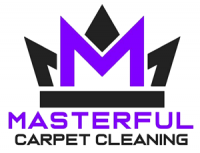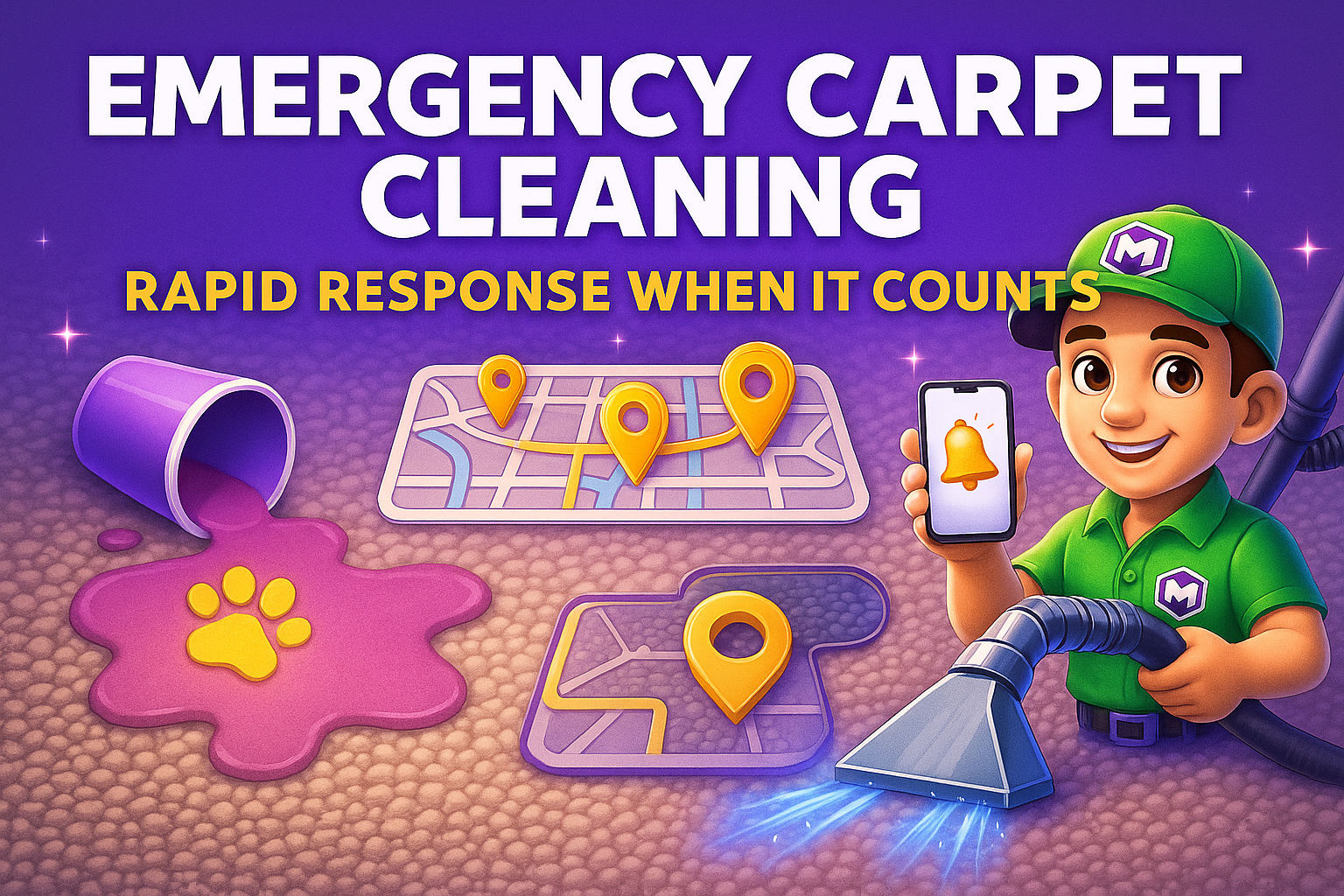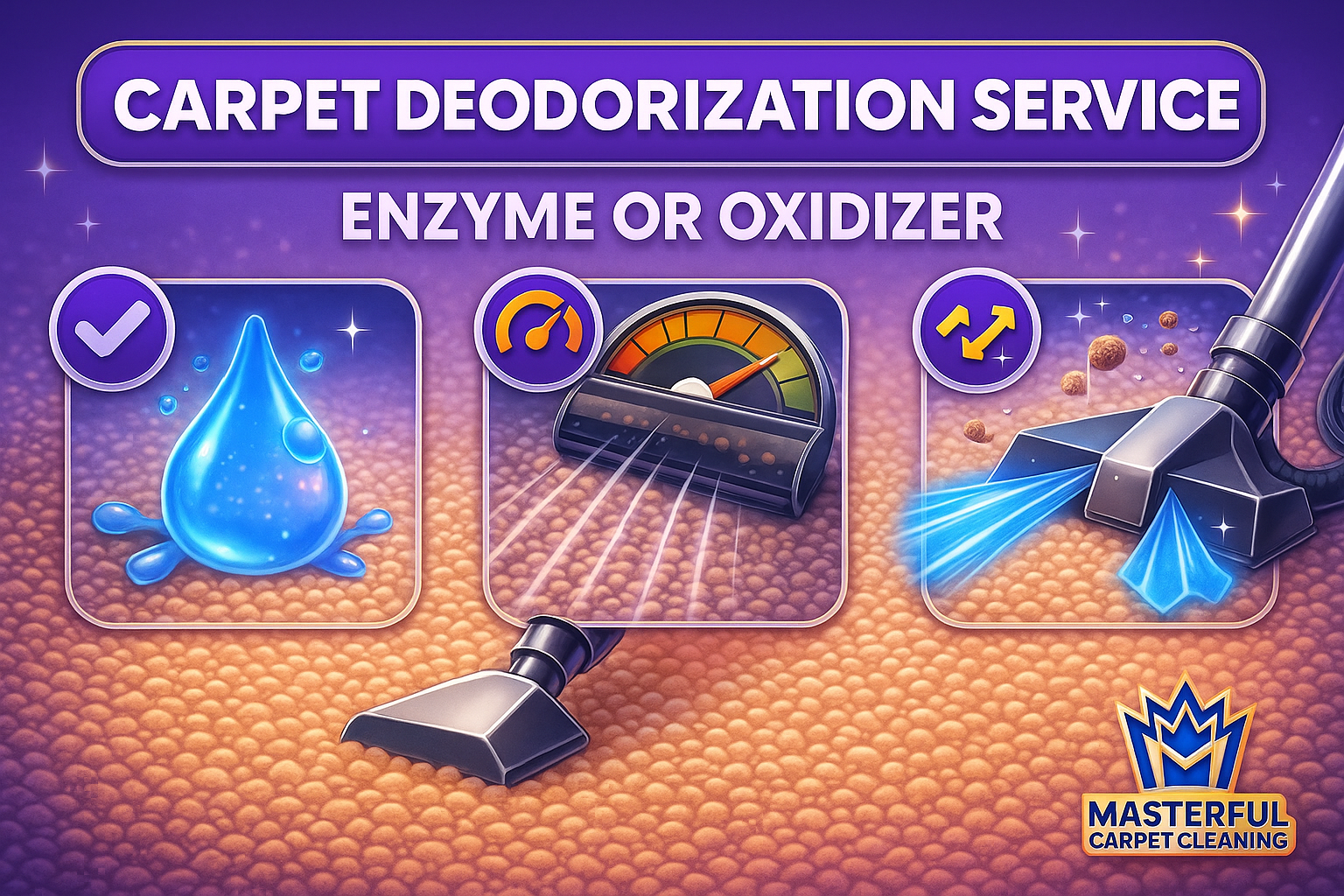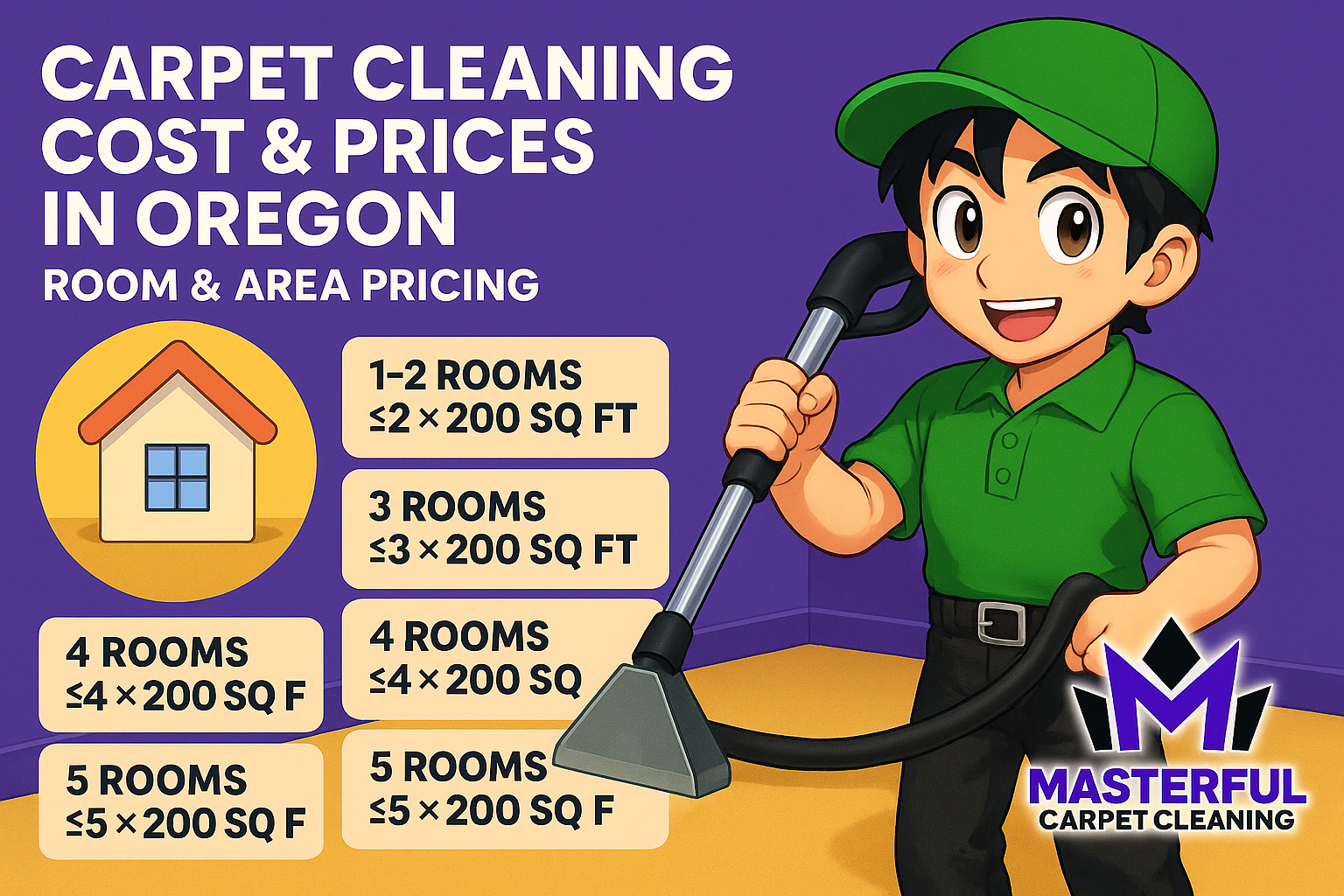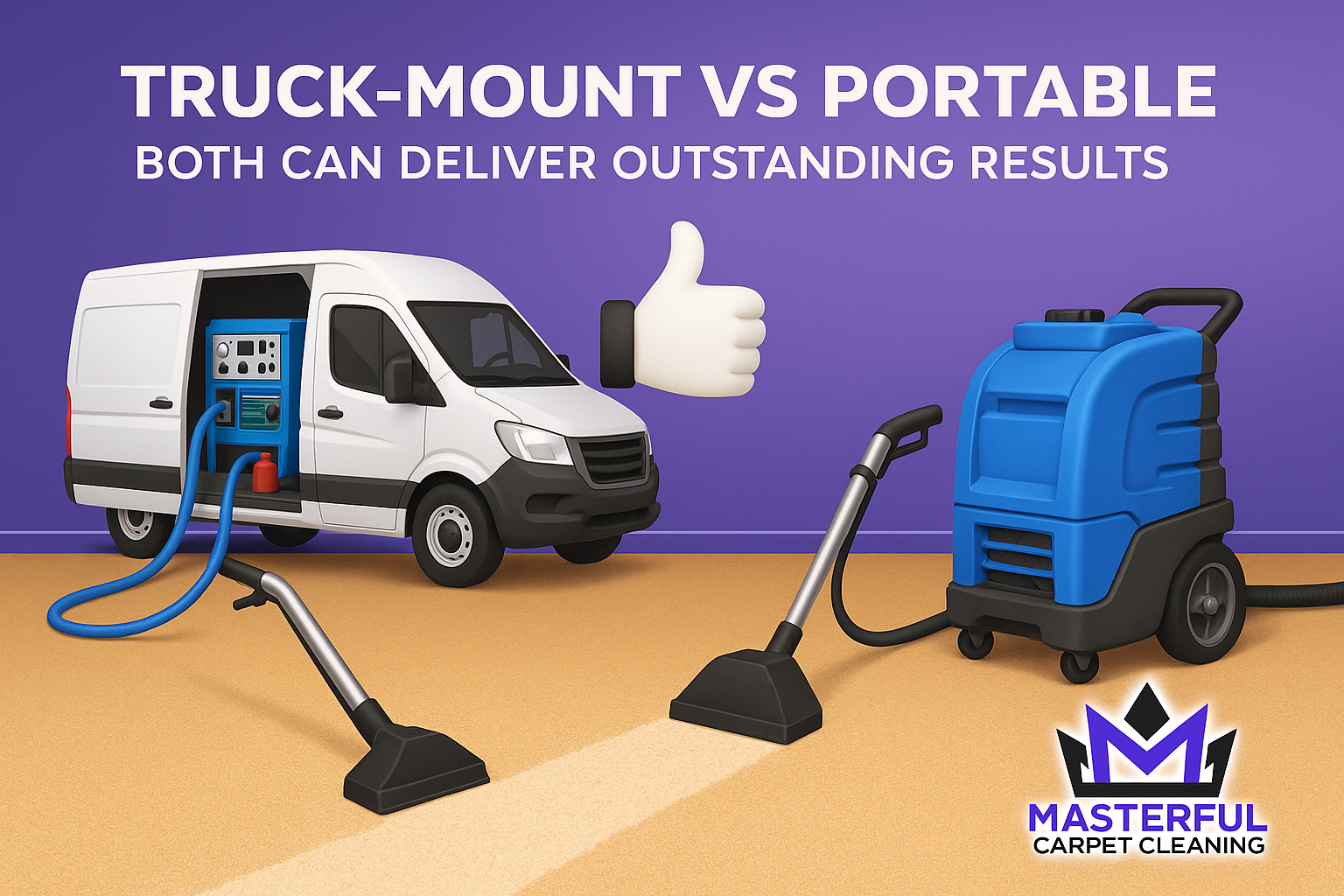Pet-Friendly Upholstery Cleaning: Safe Methods for Homes with Furry Friends

Maintaining a clean and pet-safe home can be challenging, but you don’t have to do it alone.
Trust Masterful Carpet Cleaning for expert upholstery care that prioritizes your pet’s safety.
Why Choose Masterful Carpet Cleaning?
- Pet-Safe Cleaning Solutions:
- Non-Toxic Products: We use only non-toxic, pet-friendly cleaning solutions to ensure the health and safety of your furry friends.
- Advanced Techniques: Our team employs the latest techniques to effectively remove stains, odors, and pet hair from your upholstery.
- Professional Expertise:
- Experienced Technicians: Our skilled technicians are trained in handling all types of upholstery fabrics and pet-related issues.
- Customized Care: We tailor our cleaning approach to meet the specific needs of your furniture and your pets.
- Comprehensive Services:
- Deep Cleaning: We provide deep cleaning services that penetrate beyond the surface to remove embedded dirt and allergens.
- Odor Neutralization: Our advanced deodorizing methods eliminate pet odors, leaving your home smelling fresh.
Schedule Your Professional Upholstery Cleaning Today
Don’t let pet stains and odors compromise the beauty and comfort of your home. Contact Masterful Carpet Cleaning for thorough and pet-safe upholstery cleaning.
- Book an Appointment: Use our easy online booking system to schedule a professional cleaning at a time that works for you.
- Contact Us: Have questions or need assistance? Our friendly customer service team is ready to help. Call us or reach out through our website for prompt support.
Ensure your upholstery remains clean and pet-safe with the help of Masterful Carpet Cleaning. Schedule your professional cleaning today and experience the difference!
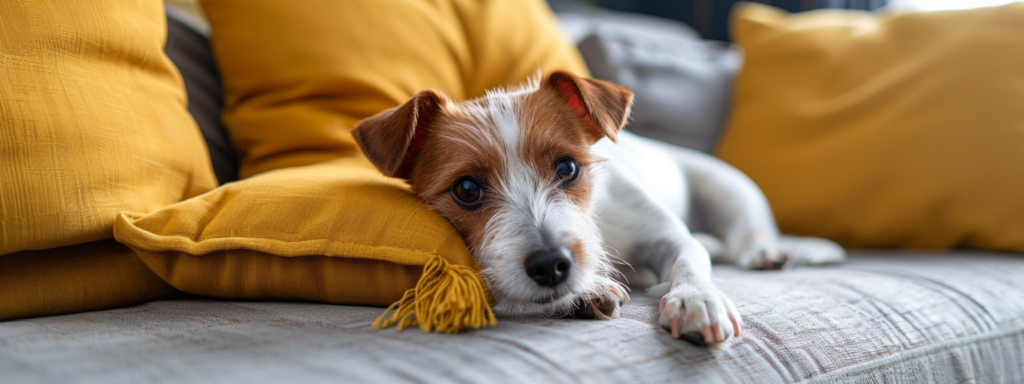
Pet Hair Removal
Keeping your upholstery free of pet hair is essential for a clean and comfortable home. Here are effective tools and strategies for removing pet hair from your furniture:
Regular Vacuuming
- Use Appropriate Attachments:
- Upholstery Tool: Use a vacuum cleaner with an upholstery attachment to effectively lift pet hair from the fabric.
- Brush Attachment: A brush attachment can help loosen embedded hair, making it easier to vacuum up.
- Crevice Tool: Utilize a crevice tool to reach into seams, corners, and other hard-to-reach areas where pet hair tends to accumulate.
- Vacuuming Technique:
- Frequency: Vacuum your upholstery at least 2-3 times a week to prevent pet hair from building up.
- Top to Bottom: Start at the top of the furniture and work your way down, ensuring all areas are covered.
- Gentle Strokes: Use gentle, overlapping strokes to avoid damaging the fabric.
Lint Rollers and Pet Hair Removers
- Lint Rollers:
- Quick Cleanups: Keep a lint roller handy for quick and easy pet hair removal. Roll it over the upholstery to pick up loose fur.
- Disposable Sheets: Replace the sticky sheets as they fill up with hair to maintain effectiveness.
- Rubber Gloves:
- Method: Wear dampened rubber gloves and run your hands over the upholstery. The fur will cling to the gloves, making it easy to remove.
- Collection: Rinse the gloves as needed to remove collected hair and continue cleaning.
- Pet Hair Remover Tools:
- Brushes: Use a pet hair remover brush or a silicone pet hair remover to lift hair from upholstery. These tools are designed to effectively gather hair without damaging the fabric.
- Reusable: These tools are reusable and easy to clean, making them a sustainable choice for regular maintenance.
Fabric Softener Solution
- Preparation:
- Mixing: Combine one part liquid fabric softener with three parts water in a spray bottle.
- Spraying: Lightly mist the upholstery with the solution. Avoid soaking the fabric.
- Wait Time: Allow the solution to sit for a few minutes to loosen the pet hair.
- Removal:
- Rubber Gloves or Brush: Use rubber gloves or a pet hair remover brush to lift and collect the loosened hair.
- Vacuum: Follow up with a thorough vacuuming to remove any remaining hair and fabric softener residue.
Sticky Tape and Velcro Curlers
- Sticky Tape:
- Application: Wrap sticky tape (sticky side out) around your hand or a paint roller.
- Rolling: Roll it over the upholstery to pick up pet hair. Replace the tape as it becomes filled with hair.
- Velcro Curlers:
- Method: Use large Velcro hair curlers to roll over the fabric. The Velcro hooks will catch and lift the pet hair from the upholstery.
- Cleaning: Remove the collected hair from the curlers as needed.
Pro Tips:
- Routine Grooming: Regularly groom your pets to reduce the amount of loose hair they shed. This can significantly decrease the amount of hair on your furniture.
- Pet Blankets: Use pet blankets or designated throws on your furniture to catch hair. These can be easily removed and washed regularly.
- Preventive Measures: Train your pets to use designated areas or furniture covers to minimize direct contact with your primary upholstery.
By incorporating these pet hair removal strategies into your cleaning routine, you can keep your upholstery free of pet hair, maintaining a clean and inviting home environment.
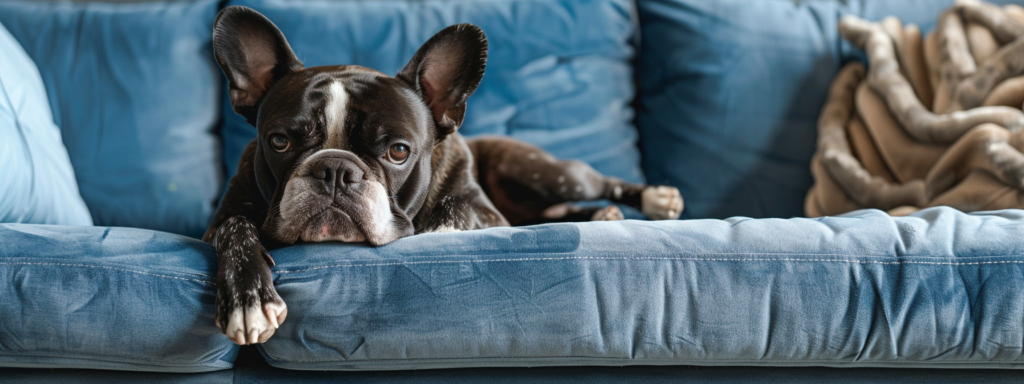
Odor Neutralization
Eliminating pet-related odors from your upholstery ensures a fresh and welcoming home environment. Here are safe, natural solutions for neutralizing pet odors:
Baking Soda
- Application:
- Sprinkling: Sprinkle a generous amount of baking soda over your upholstery, focusing on areas where odors are strongest.
- Sit Time: Let the baking soda sit for at least 15-30 minutes, or overnight for tougher odors.
- Removal:
- Vacuuming: Vacuum the baking soda thoroughly to remove it along with the absorbed odors.
- Repeat if Necessary: For persistent odors, repeat the process until the smell is completely neutralized.
Vinegar Solution
- Preparation:
- Mixing: Mix equal parts white vinegar and water in a spray bottle.
- Optional: Add a few drops of essential oil (e.g., lavender, lemon) to mask the vinegar smell and add a pleasant fragrance.
- Application:
- Spraying: Lightly mist the upholstery with the vinegar solution. Avoid over-saturating the fabric.
- Drying: Allow the upholstery to air dry. The vinegar smell will dissipate as it dries, taking the unwanted odors with it.
Essential Oils
- Essential Oil Spray:
- Mixing: Combine 1 cup of water with 10-15 drops of your favorite essential oil (e.g., lavender, eucalyptus, tea tree) in a spray bottle.
- Spraying: Lightly mist the upholstery with the essential oil spray. This will help neutralize odors and leave a fresh scent.
- Drying:
- Air Dry: Allow the upholstery to air dry completely.
Activated Charcoal
- Charcoal Bags:
- Placement: Place activated charcoal bags or sachets near or on your upholstered furniture. Activated charcoal is highly effective at absorbing odors.
- Replacement: Replace the charcoal bags every few months to maintain their effectiveness.
- Loose Charcoal:
- Containers: Place loose activated charcoal in small, breathable containers and position them around the furniture.
- Replacement: Regularly replace the charcoal for continued odor absorption.
Enzyme Cleaners
- Choosing an Enzyme Cleaner:
- Product Selection: Select an enzyme cleaner designed to break down organic compounds causing odors (e.g., Biokleen Bac-Out Stain+Odor Remover).
- Application:
- Spraying: Apply the enzyme cleaner to the affected areas according to the product instructions.
- Blotting: Blot with a clean cloth to remove excess moisture and allow the enzymes to work on the odors.
- Drying: Let the upholstery air dry completely.
Lemon Juice
- Lemon Juice Solution:
- Mixing: Mix 1 cup of water with 1/4 cup of lemon juice in a spray bottle. Lemon juice has natural deodorizing properties.
- Spraying: Lightly mist the upholstery with the lemon juice solution. Avoid soaking the fabric.
- Drying: Allow the upholstery to air dry, leaving a fresh lemon scent.
Pro Tips:
- Ventilation: Ensure good ventilation during and after odor neutralization to help remove any residual smells and speed up the drying process.
- Test First: Always test any odor-neutralizing solution on a small, inconspicuous area of the upholstery to ensure it does not cause discoloration or damage.
- Routine Freshening: Incorporate these odor-neutralizing methods into your regular cleaning routine to maintain a fresh-smelling home.
By using these natural odor neutralizing techniques, you can effectively eliminate unpleasant smells from your upholstery, ensuring your furniture remains fresh and inviting.
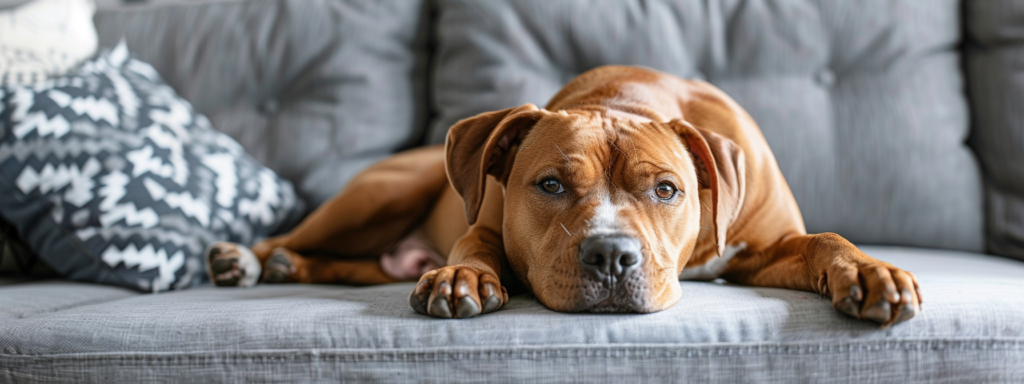
Stain Removal
Dealing with pet stains quickly and effectively is essential to maintaining clean and fresh upholstery. Here are safe and effective methods for removing common pet stains:
Urine Stains
- Blotting:
- Immediate Action: Blot the urine stain immediately with a clean cloth to absorb as much liquid as possible. Avoid rubbing, as it can spread the stain and push it deeper into the fabric.
- Vinegar Solution:
- Mixing: Mix equal parts white vinegar and water in a spray bottle.
- Application: Spray the solution onto the urine stain and let it sit for 5-10 minutes.
- Blotting: Blot the area with a clean cloth to remove the vinegar solution and any remaining urine.
- Baking Soda: Sprinkle baking soda over the damp area to absorb moisture and neutralize odors. Vacuum once dry.
- Enzyme Cleaner:
- Choosing a Cleaner: Select an enzyme cleaner designed for pet urine (e.g., Nature’s Miracle).
- Application: Apply the enzyme cleaner to the stained area according to the product instructions. Enzymes break down the proteins in urine, eliminating the stain and odor.
- Drying: Allow the upholstery to air dry completely.
Vomit Stains
- Blotting:
- Initial Cleanup: Remove any solid material with a paper towel or dull knife. Blot the area with a clean cloth to absorb as much liquid as possible.
- Baking Soda:
- Application: Sprinkle baking soda on the stain to absorb moisture and neutralize odors. Let it sit for 15-30 minutes.
- Vacuuming: Vacuum the baking soda thoroughly.
- Mild Soap Solution:
- Mixing: Mix a few drops of mild dish soap with warm water.
- Application: Dampen a clean cloth with the solution and gently blot the stain.
- Rinsing: Rinse the area with a cloth dampened with water and blot dry.
- Enzyme Cleaner:
- Application: For persistent stains, apply an enzyme cleaner to the affected area. Follow the product instructions.
- Blotting: Blot with a clean cloth to remove excess moisture and allow the enzymes to work on the stain.
- Drying: Let the upholstery air dry completely.
Dirt and Mud Stains
- Dry and Vacuum:
- Drying: Allow the mud to dry completely before attempting to clean it.
- Vacuuming: Vacuum the dried mud to remove as much dirt as possible.
- Mild Soap Solution:
- Mixing: Mix a few drops of mild dish soap with warm water.
- Application: Dampen a clean cloth with the solution and gently blot the stain.
- Scrubbing: Use a soft brush to gently scrub the stain if necessary.
- Rinsing: Rinse the area with a cloth dampened with water and blot dry.
Pet-Safe Stain Removers
- Commercial Pet-Safe Cleaners:
- Choosing a Cleaner: Use a commercial pet-safe upholstery cleaner that is specifically formulated to remove pet stains and odors (e.g., Rocco & Roxie Professional Strength Stain & Odor Eliminator).
- Application: Follow the product instructions for application and removal.
- Natural Alternatives:
- Vinegar and Baking Soda: Mix equal parts white vinegar and water in a spray bottle. Spray onto the stain and blot with a clean cloth. Sprinkle baking soda over the damp area and vacuum once dry.
Pro Tips:
- Act Quickly: The sooner you treat a stain, the easier it will be to remove.
- Test Cleaning Solutions: Always test any cleaning solution on a small, inconspicuous area of the upholstery to ensure it does not cause discoloration or damage.
- Gentle Blotting: Avoid rubbing stains, as this can push them deeper into the fabric. Blot gently to lift the stain.
- Routine Checks: Regularly inspect your upholstery for new stains and address them promptly to prevent them from setting in.
By following these pet-friendly stain removal techniques, you can effectively address common pet stains and maintain the cleanliness and freshness of your upholstery.
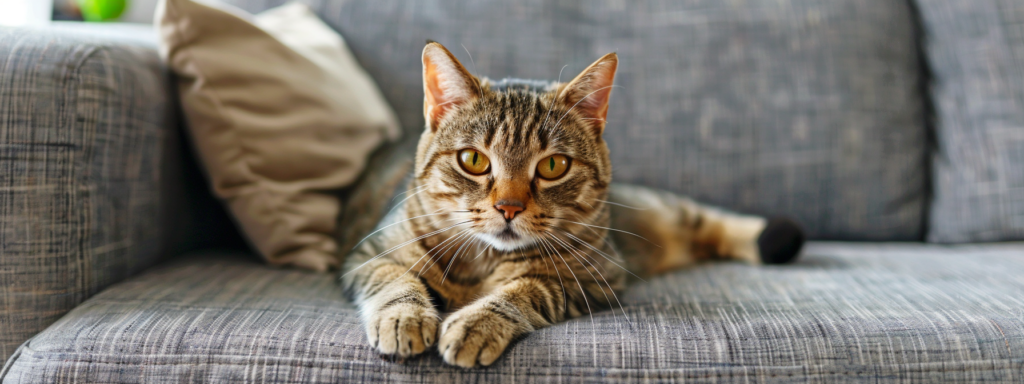
Pet Safety
Ensuring the cleaning products and methods you use are safe for your pets is important. Here are tips and techniques to keep your furry friends safe while maintaining clean upholstery:
Choosing Pet-Safe Cleaning Products
- Non-Toxic Cleaners:
- Ingredients to Avoid: Steer clear of cleaning products containing ammonia, bleach, phenols, formaldehyde, and phthalates, as these can be harmful to pets.
- Pet-Safe Brands: Opt for cleaning products labeled as pet-safe or non-toxic (e.g., Method, Seventh Generation, Honest Company).
- Natural Alternatives:
- Vinegar and Water: A solution of equal parts white vinegar and water is a safe and effective cleaner for many types of stains and odors.
- Baking Soda: Baking soda is non-toxic and excellent for neutralizing odors and absorbing moisture.
- Enzyme Cleaners:
- Enzyme-Based Products: Choose enzyme cleaners that are specifically designed to break down organic matter from pet stains (e.g., Nature’s Miracle, Biokleen Bac-Out). These products are effective and safe for pets.
Safe Cleaning Practices
- Ventilation:
- Ensure Good Airflow: Open windows and use fans to ventilate the area while cleaning to dissipate any fumes from cleaning products.
- Pet-Free Zone: Keep pets out of the room being cleaned until it is fully ventilated and the cleaning products have dried.
- Rinsing and Blotting:
- Thorough Rinsing: After using any cleaning solution, rinse the area with water and blot dry to remove any residue that could be harmful to pets.
- Drying Time: Allow the upholstery to dry completely before allowing pets back onto the furniture to prevent them from coming into contact with damp cleaning solutions.
- Proper Storage:
- Secure Storage: Store cleaning products in a secure location out of reach of pets to prevent accidental ingestion.
- Labeling: Clearly label all cleaning products and solutions to avoid confusion and ensure safe usage.
Preventive Measures
- Pet Training:
- Designated Areas: Train your pets to use designated areas or furniture covers to minimize direct contact with your primary upholstery.
- Positive Reinforcement: Use positive reinforcement techniques to encourage pets to stay off certain furniture pieces.
- Protective Covers:
- Slipcovers and Throws: Use washable slipcovers or throws on your upholstery. These can be easily removed and cleaned regularly.
- Pet Blankets: Designate specific blankets or pet beds for your pets to use. Place these on your furniture to catch fur and prevent direct contact with the upholstery.
- Routine Grooming:
- Regular Brushing: Regularly groom your pets to reduce the amount of loose hair and dander they shed.
- Bathing: Bathe your pets as recommended by your vet to keep their fur clean and reduce odors.
Emergency Preparedness
- First Aid Kit:
- Pet-Safe Supplies: Keep a pet-specific first aid kit handy, including items like hydrogen peroxide (for inducing vomiting if ingested), pet-safe antiseptics, and contact information for your veterinarian.
- Emergency Contacts:
- Veterinarian Information: Have your veterinarian’s contact information readily available in case of accidental ingestion of cleaning products.
- Poison Control: Know the number for the Animal Poison Control Center (APCC) or a local pet emergency hotline for immediate assistance.
Pro Tips:
- Read Labels: Always read the labels of cleaning products to ensure they are safe for use around pets.
- Test Solutions: Test any new cleaning solution on a small, inconspicuous area of the upholstery to ensure it does not cause damage or discoloration.
- Regular Checks: Routinely check your upholstery for signs of wear or damage caused by pets and address any issues promptly.
By following these pet safety tips and using pet-friendly cleaning methods, you can maintain a clean home while ensuring the well-being of your furry friends.
Author
-

As the Co-Owner of Masterful, Randy has been providing quality cleaning services to the Salem and Portland areas of Oregon for many years. He has built a reputation for excellence in the industry. His team take prides in using the latest cleaning techniques and technologies to deliver exceptional results every time.
View all posts
